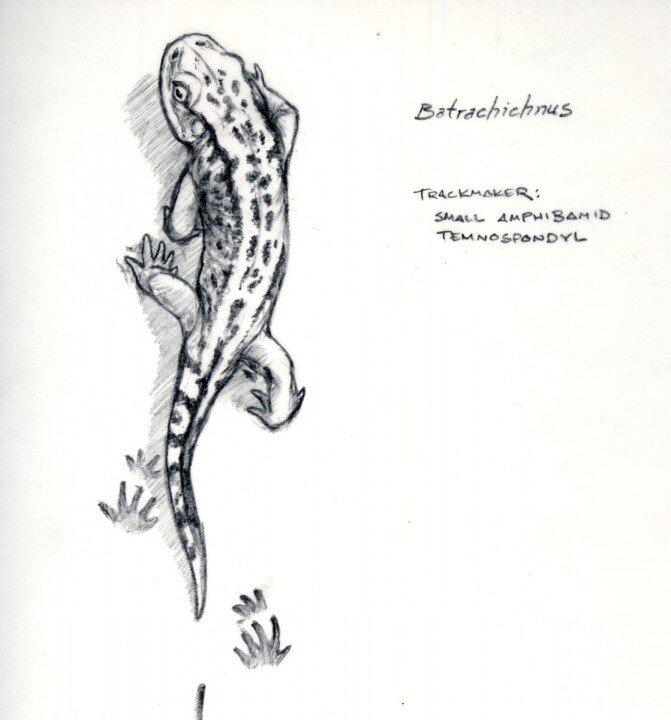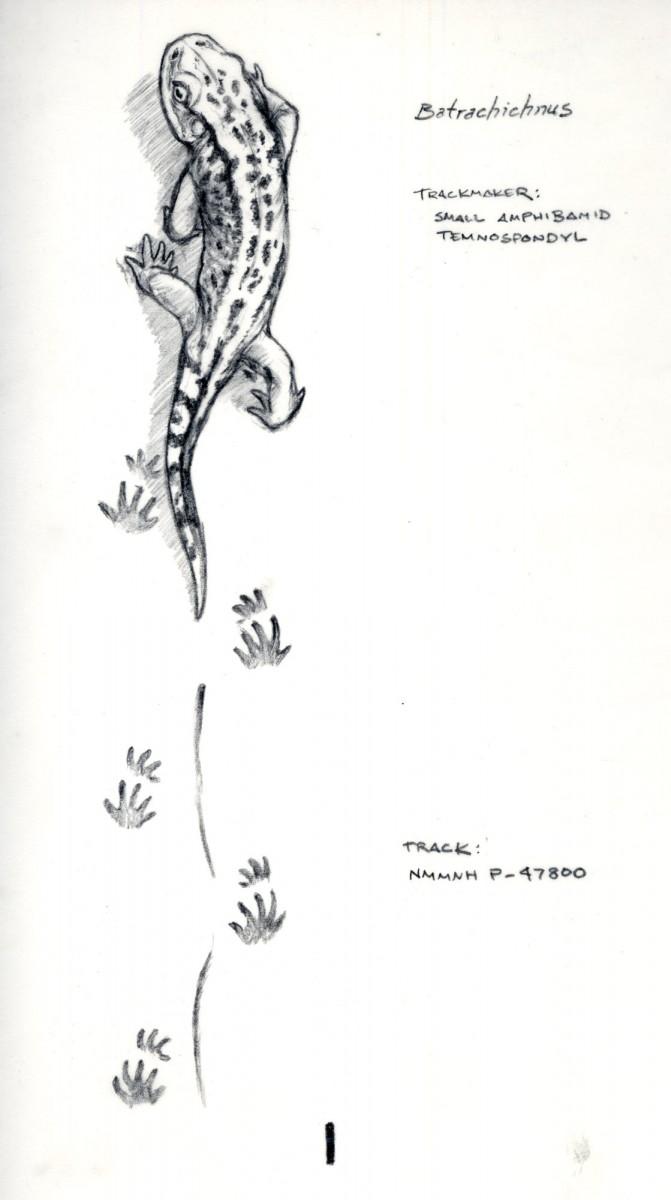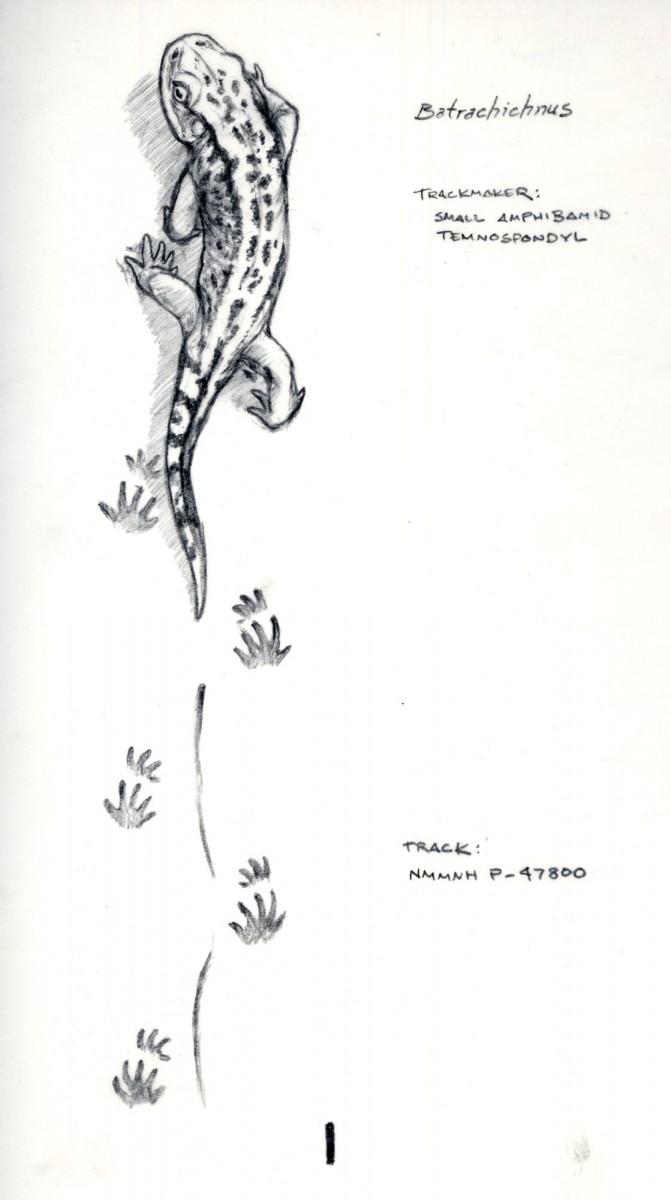Tracks of a tiny four-legged animal have been found at the Joggins Fossil Cliffs in Nova Scotia, and are the smallest known fossilized tetrapod prints in the world.
The prints were made by a juvenile amphibian, believed to be similar to a salamander, about 315 million years ago during the Carboniferous period.
They were spotted by amateur paleontologist Gloria Melanson, daughter of former Keeper of the Cliffs Don Reid, and identified as ichnogenus Batrachichnus salamandroides, meaning the genus is only known from its fossilized footprints.
“When I saw the very small tail and toes I knew we had something special,” Melanson said in a press release. “I never thought it would be the world’s smallest.”
There are about 30 prints between 1.6 and 2.4 mm (0.06 and 0.09 inches) long—the hind feet were bigger than the fore feet—and the track is 48 mm (1.89 inches) long. The salamander is estimated to have been about 8mm (0.31 inches) long from nose to tail.
“This was one of the most exciting finds I have ever made and I am very pleased that, along with my colleagues, we are able to share it with the world,” Melanson said.
“Every big fossil find is by chance; it’s all about being lucky and recognizing what you’re looking at.”
The juvenile’s prints may have been some of its first steps on land following metamorphosis from a water-dwelling tadpole. It appears to have been walking and then changed direction into a run, perhaps while hunting small insects or to avoid a predator.
The findings were published in the journal Ichnos on Aug. 27.
Read the research paper here.
The Epoch Times publishes in 35 countries and in 19 languages. Subscribe to our e-newsletter.






